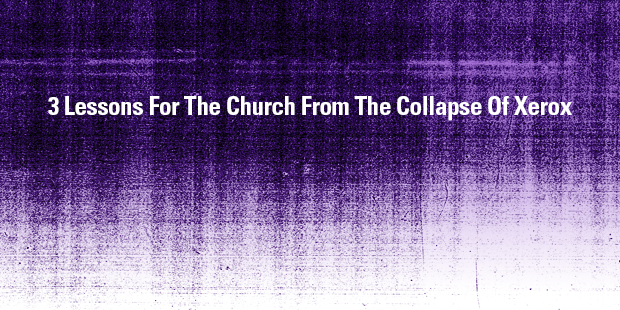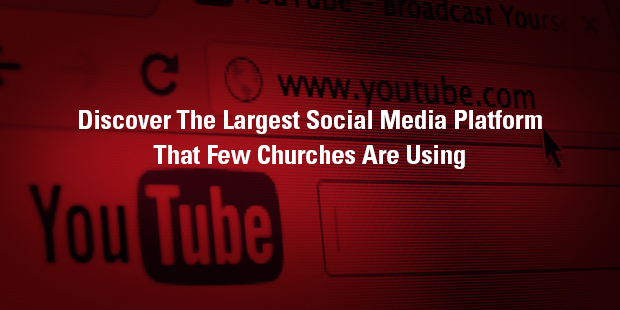With culture in such a rapid state of flux, with the dominant headline being the increasingly post-Christian nature of our world, many churches are uncertain how best to respond in terms of outreach. They know they aren’t reaching the unchurched as effectively as they would like, but they don’t always feel comfortable trying to emulate the fast-growing models they see and hear so much about.
More specifically, they don’t feel they can. You walk through a megachurch children’s ministry and see a built-in climbing wall in a first-grade room, and it’s hard to know what there is to feel except envy.
Fair enough.
So here are five outreach shifts that almost every church should be able to make – regardless of style or structure, tradition or denomination – that will help situate your church toward greater effectiveness at reaching the unchurched. And each one can be followed no matter your church size and no matter your budget.
1. Change Your Outreach Focus from Easter to Christmas Eve.
Here’s something that isn’t often talked about, but I’m prepared to say is a new principle: Christmas Eve is the Super Bowl of outreach, not Easter.
There are many reasons for this, and none of them have anything to do with the church. Here are two: 1) an ever-increasing number of schools and colleges schedule their spring breaks around Easter, making Easter weekend one of the biggest “suitcase” weekends (travel/vacation weekends) of the year; 2) Easter has been effectively secularized into little more than the bunnies and egg hunts.
So why is Christmas Eve better for outreach?
First, unlike Easter and the resurrection, it continues to be primarily related to the birth of Jesus. Second, it is not a “suitcase” night – if people travel, it is to gather with other family members, not vacation. Third, unlike the “weekend” or Sunday-centric nature of Easter, Christmas Eve services can be scheduled for multiple days leading up to and including Christmas Eve. Fourth – and most important – there is a larger number of unchurched people present at Christmas Eve, undoubtedly due to attending being more of a family event than Easter (which is viewed as more of a spiritual event).
At Meck, we routinely have larger attendance figures for our Christmas Eve services than we do our Easter services. Easter weekend is big, to be sure, and is our second-largest series of services. But it’s not as big as Christmas Eve.
Lesson? Quit putting all of your eggs in the Easter basket and get serious about Christmas Eve.
2. Drop Direct Mail and Move to Social Media.
When I started Meck, nothing was better than direct mail. That was, of course, 25 years ago. It’s not better anymore. In fact, it’s often a waste of Kingdom money. It can still be effective if targeted toward new residents, or specific demographics, but the more specific direct mail becomes, the more expensive it becomes.
(And please, don’t even think about an ad on the “church” page of your newspaper. You are after the unchurched, right?)
A better use of your marketing efforts is online, such as ads on Pandora or, even better, through targeted pop-up ad responses to Google searches, or banner ads on the websites of local subdivisions, or the vast opportunities that exist on social media.
Speaking of social media, prepare things that your attenders can share on Facebook, Instagram or Twitter.
And the good news for small churches? So much of this is not simply cheap, but free, with technology almost everyone already owns.
Lesson? No matter what style your church may be, there is no excuse to be out of style with media.
3. Let Them Belong Before They Believe.
The most common way of thinking about outreach is that you get someone to believe in Jesus, and then you get them to belong to your church.
What if I told you the new reality is the opposite?
Today, people want to belong before they believe. They often have a lengthy adoption process as they move from spiritual and biblical illiteracy toward an understanding and acceptance of faith. So evaluate your outreach strategy in light of offering “belonging” opportunities that enable a movement toward believing. If you think I’m fishing for instituting a “seeker” service, think again.
Yes, I believe that the front door of the church is still the weekend service.
Yes, I believe that biblically (e.g., I Cor. 14:23), we should make sure our services are understandable to those far from God.
But no, a full-blown seeker service strategy (which no one really does anymore, anyway) is not what is at hand. But that doesn’t mean you can’t provide lots of opportunity to belong before believing.
Examples might include “exploring” small groups, low-key serving opportunities that don’t require the embrace of the Christian faith (much less membership), as well as a simple atmosphere of acceptance for those who simply with to come and see, come and hear, come and explore.
Lesson? Believing is at the end of the process, not belonging.
4. From Reach the Woman to Reach the Man.
For decades there has been a reality that no one owned: the church was designed for women and, as a result, that’s who they attracted. The service was for women, the music was for women, the décor was for women. I’m not saying this was intentional; it’s almost as if it happened by default. And don’t get me wrong – I am completely for women in the life of the church. Just not women as the life of the church in such a way that men are alienated.
So if the church has been unduly feminized, we shouldn’t wonder why there are so few men in attendance. Just like an African-American walking into a lily-white congregation might not feel comfortable returning, a man walking into a service decorated in pastels and flowers and “Jesus is my boyfriend” songs may not either.
Coupled with this is another truth that is seldom discussed related to how the dynamics of family outreach work. I don’t have a definitive study to back this up, just three-plus decades of being in the game: if you reach the man, you reach the rest of the family. But if all you do is reach the woman, you don’t tend to get much further in that family beyond the children. And without a supportive, involved, attending father, you don’t often keep the kids long after puberty.
Lesson? The absence of men from the life of church is legendary; work on their presence, and you can change the size and scope of your church.
5. From “You Build It They Will Come” to “You Create It They Will Invite.”
The old “Field of Dreams” mentality was that if you build something… like a great weekend event… they will come. Meaning crowds of unchurched people looking for a church home.
Um, no.
At least, not anymore. And it hasn’t been that way for a long, long time.
But if you create something that your current attenders intuitively sense would be perfect for their unchurched friends, they will begin inviting them to attend.
Yes, this may mean some changes to your current service on the front-end, but you might be surprised (and relieved) at how many of them are simply qualitative, and not necessarily stylistic.
At Meck, yes, we hear that people like our music and style of communication, but we just as often (if not more) hear that they appreciate our parking team, our signage that guides first-time guests, security within our children’s ministry and, most of all, friendliness.
Lesson? You can’t “build it” and have them come, but you can “create it” and have them be invited.
So there are just five things, among many others, that any church can take advantage of.
No matter your size, no matter your budget.
Connect with an Auxano Navigator to explore options for reaching more people.
> Read more from James.

Tags: James Emery White, Outreach efforts, outreach
|
What is MyVisionRoom? > | Back to Leadership >




























